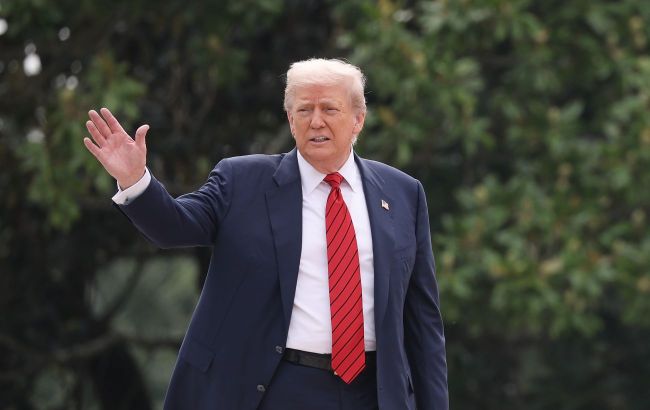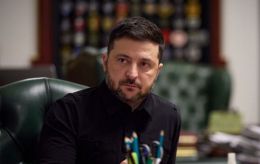Trump decides it's time to pressure Russia, but the real challenge lies ahead – Politico
 Photo: Donald Trump (Getty Images)
Photo: Donald Trump (Getty Images)
The US and the EU are trying to develop a unified approach to putting pressure on the Kremlin. Oil, gas, and trade tariffs remain key in the negotiations, reports Politico.
A coalition of European leaders convinced US President Donald Trump that Russia is not interested in ending the war in Ukraine and must be forced to sit at the negotiating table.
Now Europeans must persuade the unpredictable White House to agree on how to achieve this.
Over the past week, a series of diplomatic visits took place, during which senior officials from both sides of the Atlantic discussed new financial restrictions and plans to cut supplies of Russian oil and gas.
The EU even sent a technical team to Washington to work out the details of proposals, the main objectives of which are finding common ground on both sides.
“Trump is finally on our side. The question now is how do you reconcile the two approaches?” one EU diplomat said on condition of anonymity.
Differences over tariffs and sanctions
The EU is preparing a new package of sanctions against Russia, the 19th since Russia’s full-scale invasion of Ukraine in February 2022. However, diplomats emphasize that the most effective actions are possible only in partnership with the US.
Despite general agreement on the need to pressure Vladimir Putin, the Trump administration prefers to use trade instruments such as tariffs. Meanwhile, the EU relies on formal sanctions against companies and financial institutions cooperating with Moscow.
Heated discussions with the US are expected on how exactly to strike at the Russian economy, a second EU diplomat noted.
Brussels’ red lines
This week, Trump told EU representatives that he wants to impose 100% tariffs against India and China for purchasing Russian energy, provided Brussels does the same. But for the EU, this is economically and politically impossible.
Such a step contradicts the EU’s basic principles. European Commission President Ursula von der Leyen once again stressed that tariffs are taxes for European consumers. Imposing tariffs on India and China would cause enormous damage to the bloc’s economy.
“We don’t do tariffs. We are a trading bloc. We are exporters. Exports are the engine of the EU economy. This is our DNA,” said Agathe Demaraisa, senior policy fellow at the European Council on Foreign Relations.
She added: “The partners will say no, because there is no way on earth that the EU is going to impose tariffs, especially at that level, on China and India.”
The idea of introducing tariffs against Russia within the 19th sanctions package was discussed but did not gain support among ministers.
Energy cooperation
Trump also called on Europe to completely stop purchasing Russian energy resources, which the Kremlin uses to finance the war. This strengthened the positions of European leaders who insist on a full halt to imports from Russia.
US Energy Secretary Chris Wright arrived in Brussels on Thursday to finalize agreements for the EU to purchase additional volumes of American gas, oil, and nuclear fuel worth $750 billion. “These are ambitious energy import targets,” he said, stressing that the US is capable of meeting the growing demand.
EU Energy Commissioner Dan Jørgensen stated that he intends to accelerate the EU’s commitment to end imports of Russian gas by the end of 2027. “I have put forward a proposal to ban the import of Russian gas,” he said, noting that for this, Europe needs larger LNG supplies from the US.
These plans open significant commercial prospects for the US and also strengthen Brussels’ positions in negotiations with countries such as Hungary and Slovakia, which resist abandoning Russian resources, Politico writes.
As a reminder, US Energy Secretary Chris Wright stated that European countries must stop purchasing Russian oil and gas if they want Washington to strengthen sanctions against Moscow.
According to the Financial Times, the US will pressure G7 countries to impose tariffs of 50 to 100% on India and China for buying Russian oil.

